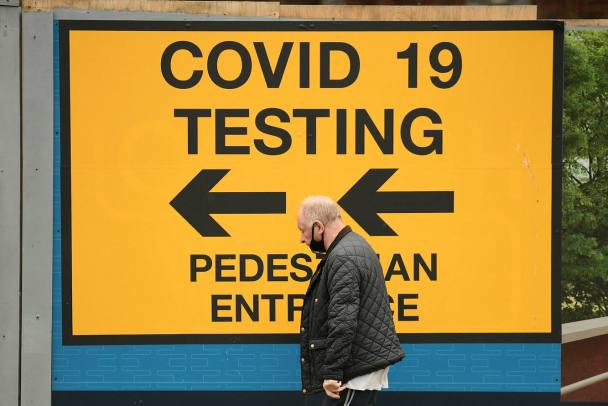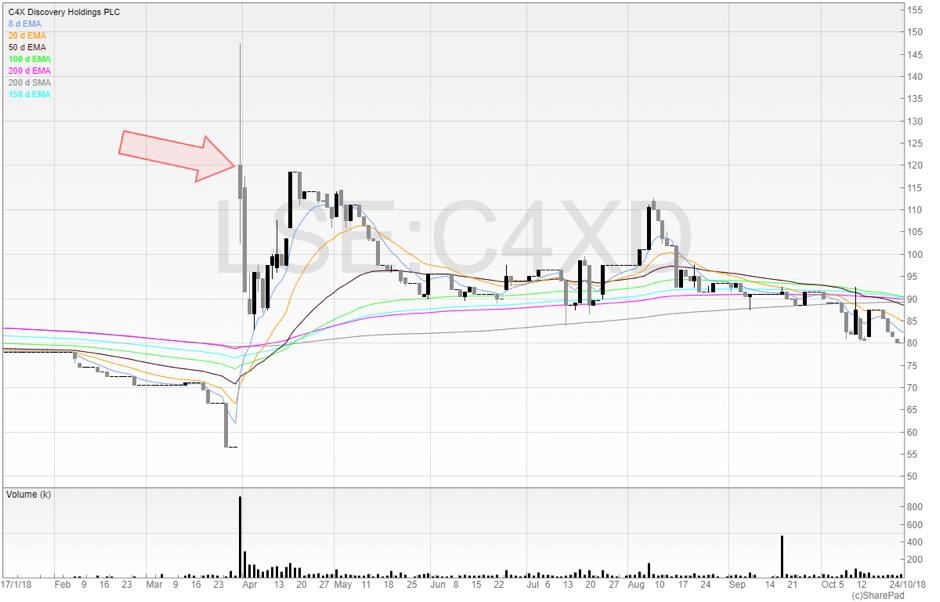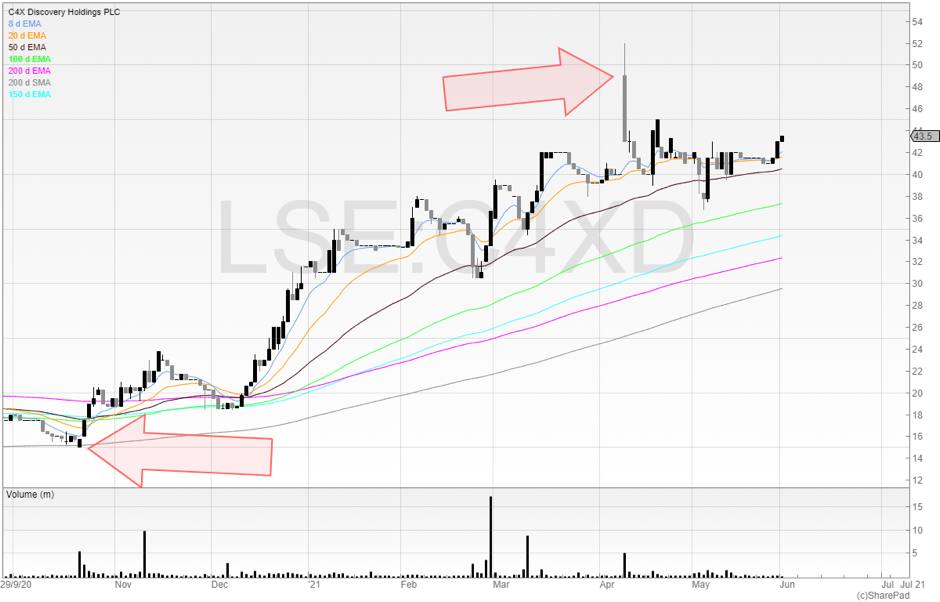- Have the UK markets priced in a change in sentiment by the government when it comes to lockdown easing?
- What can C4X placings and warrants teach us about changing market dynamics?
The UK government is considering a U-turn on the easing of restrictions on 21 June. The fact that the majority of adults have had their first vaccine and almost half of the total population has been fully vaccinated is beside the point for the markets – what matters is whether the news has been priced in.
Right now it is impossible to know as there are several factors at play. Firstly, what is currently expected? For example, if everyone is expecting the government to cancel the easing of restrictions, then if the restrictions aren’t eased it should (in theory) have little effect on the market. Secondly, it depends on the depth and severity of these restrictions. It seems unlikely that restaurants and bars will be forced to close again, but we’ve been here before last summer. Many market commentators (including myself) believed that the virus wasn’t as bad as thought, only for it to come back with a vengeance last winter. I have no problem admitting I’m wrong because when the facts change, I will likely change my mind.
In any case, this government has done more U-turns than you’d see on a Fast and Furious film. It makes sense to be prepared for one more.
C4X Discovery (C4XD) listed in October 2014 at a market capitalisation of £31m, raising £11m along the way. Like many of its Aim peers, it came to the market some way from real profitability. Nearly seven years and several more placings later, C4XD is finally showing some promise. However, this was also the case in 2018 when the company signed a licensing agreement with Indivior (INDV) worth up to $294m – many multiples of the market cap at the time. The company received $10m upfront, with the rest as potential milestones and then royalties on top. But since then, not much more has come from C4X, and the share price dropped from a peak of over 140p to a low of 8p in early 2020 – a 94 per cent drawdown. The company refinanced at 15p a share in May last year and again six months later at 14p a share. On the second placing, warrants were included at a share price that was 100 percent higher than the placing price at 28p.
When warrants are included in an equity placing this changes the dynamics. Warrants make the placing more attractive. Warrants have an exercise price but require no money until they are exercised – this means that the warrant is a risk-free option with no downside and only potential upside. But with the introduction of warrants it does mean that the equity is no longer so desirable. It incentivises equity holders who took the placing to dump their shares in the market and retain the warrants. Deals done with warrants involved will see increased interest in taking the deal but in general a higher churn on the equity as traders play for the warrants. So why hold the equity, if you can get rid of the downside and have risk-free upside?
This is exactly how I saw it and I took this placing, and sold my equity in the market for a profit. I now hold no position aside from the warrants.
Chart 1 shows the reaction to the announcement of the license agreement with Indivior. We can see that the stock opened up at 120p, rallied as high as over 140p but then closed down at 115p. There were two warning signs that any short-term traders should be getting out here and potentially flipping to go short. The first sign was that the stock had come off its intraday high significantly. Stocks that want to go higher are usually bought up on the dips and any tree shakes by the market makers soon get bought up and so they mark the stock higher.
The second warning sign was that the volume was huge – well over 10 times the average daily volume of the time – and the price closed down. Stale bulls (it could be private investors stuck in the stock or institutions who want to sell out) were taking the opportunity to unload into the liquidity provided and shift some or all of their holdings. The stock continued to fall to as low as 85p and rallied, but could not break the previous high.
Chart 2 shows the recent price action of the stock. The bottom arrow shows the placing announcement and consequent price response. This was incredibly surprising to me as I was hoping to get out with a 10 per cent loss on the equity as I anticipated selling to be a crowded trade. Remember, warrants reduce the attraction of holding equity.
The top arrow marks the announcement of a license agreement with Sanofi, in a licensing agreement worth up to €414m (£357m). The company received a €7m upfront payment, but again the price action was heavily sold into. I took a long trade on the bell and closed it almost instantly. This was because Level 2 was showing only buys yet the price was stagnating – showing signs of a background sell that had yet to be printed. Downside always comes first, and the stock drifted to 40p.
The trend for the stock is clearly still up, but for those looking to take a breakout trade, I’d suggest to be careful of more stale bulls, placing sellers, and warrant holders that are now well in the money. I believe there are better opportunities elsewhere.
- Michael has started his Buy the Breakout newsletter which contains trading ideas and tips he has learned whilst trading. You can subscribe for free at his website here: www.shiftingshares.com/newsletter/
- Twitter: @shiftingshares
- New subscribers to SharePad can claim a free month of data with the code: Michael











